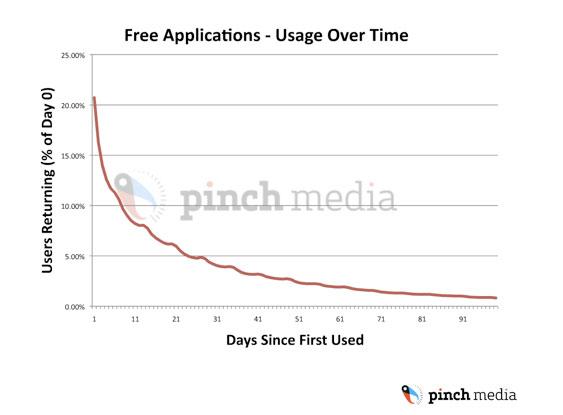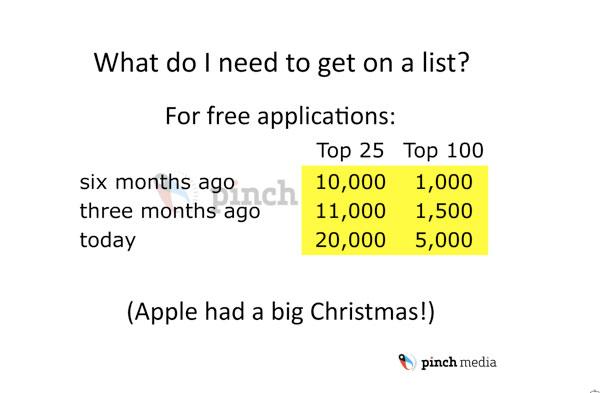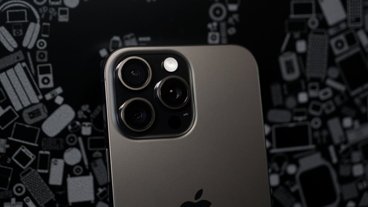The vast majority of apps downloaded from the App Store are in use by less than 5% of users after one month has passed since the download, according to an analytics firm that is also shedding light on other aspects of the business.
Just 20% of users even return to run a free application again the day after it's downloaded. As time goes on, that decline continues, eventually settling below five percent at the one month elapsed mark and nearing zero after three months.
Paid applications showed a similar decrease, indicating that developers have just a short time to capture the user's attention.
Yardley also took on a question developers often face: whether to charge for an app or use a free, ad-supported model. He noted that paid apps are used slightly more than free ones and for slightly longer periods. In his findings, very few apps can succeed with ad support. The number of views just isn't there.
Assuming free apps are run a dozen times by each user, and that those free apps are run about 6.6 times more often in total than paid apps, Yardley showed that "the typical application would have to bombard its users with ads to beat the money it'd make from paid sales."
Specifically, the average free app would need to earn $8.75 CPM (an advertising term that means cost per thousand) in order to equal revenues that paid apps receive on average, but the market is currently standing in a range of 50 cents to two dollars CPM. Thus, Yardley concludes, only a few high-performing applications, representing less than 5% of the market, can maximize earnings with advertising.
"In other words, unless there's something inherent about the app that screams free, sell it," he said.
Category matters, too: games are used for longer periods than any other genre. Pinch Media found the long-term audience for the average app is just 1% of the total number of downloads. Sports apps retain users a little better over the short term, and entertainment offerings retain best over the long term.
Finally, the company estimates a free app needs 5,000 downloads in a 24-hour period to make the App Store's Top 100 list or 20,000 in the same period to place on the Top 25. Compared to six months ago, when there were fewer competitors, the threshold needed for the Top 25 has doubled. Meanwhile, the Top 100 minimum barrier for entry has increased by a whopping five times.
Pinch Media's analytics have also helped identify some of Apple's next-generation iPhone prototypes, which have represented themselves as "iPhone 2,1" in website visit logs.
 Zach Spear
Zach Spear








-m.jpg)






 Charles Martin
Charles Martin
 Marko Zivkovic
Marko Zivkovic
 Andrew Orr
Andrew Orr
 Amber Neely
Amber Neely

 William Gallagher and Mike Wuerthele
William Gallagher and Mike Wuerthele










38 Comments
Interesting. We see reports of applications developers making a lot of quick money with often simple (and sometimes ridiculous) applications, but apparently this is just a 'flash-in-the-pan' sort of thing. If 95+% of applications aren't even used after a few months, then it doesn't bode well for the whole application market long-term. Eventually people will realize that, after having bought a few apps and not really using them, they only need the bundled Apple applications.
It appears that only the HOPE of usefulness or entertainment gets people to buy these apps, but then they realize they're not all that useful or entertaining after all. Just like people thought PDA's would be super useful, and then didn't use them because their cell phone had all they needed anyway -- just the basics.
So if you want to make a bundle on a quick app, better do it quickly.
To me it simply boils down to two things:
1) Many free apps are downloaded just to try them out, and discarded after the fact.
2) Many "novelty" apps like iBeer or iFart are only fun the first few times they're used. After that the novelty quickly vanishes.
Which brings us to a corollary: If you want to create longer-lasting applications, then make them useful. Very, very useful.
I use applications like Stanza, Now Playing, OmniFocus, Shazam, and Shopper almost daily because they fulfil a need and because they have depth.
To me it simply boils down to two things:
1) Many free apps are downloaded just to try them out, and discarded after the fact.
2) Many "novelty" apps like iBeer or iFart are only fun the first few times they're used. After that the novelty quickly vanishes.
Which brings us to a corollary: If you want to create longer-lasting applications, then make them useful. Very, very useful.
I use applications like Stanza, Now Playing, OmniFocus, Shazam, and Shopper almost daily because they fulfil a need and because they have depth.
Not surprised. Read a report that when Apple cane out with the new pinch features on the late MacBook pro, it stated more than 80% do not use the features after a few weeks.
I only have apps that I use on a regular basis:mbox mail, RSS, Beejive ect...the free crapones I try and then delete.
I shouldn't be surprised that every fracking little thing I do on every single electronic device I own is being tracked, recorded, monitored and analyzed so that someone can figure out how to make more money, but it just really irks me that someone's been secretly monitoring my application usage on my iPhone and reporting data back to some mothership.
How does the datastream flow? I'd like to cut it off.